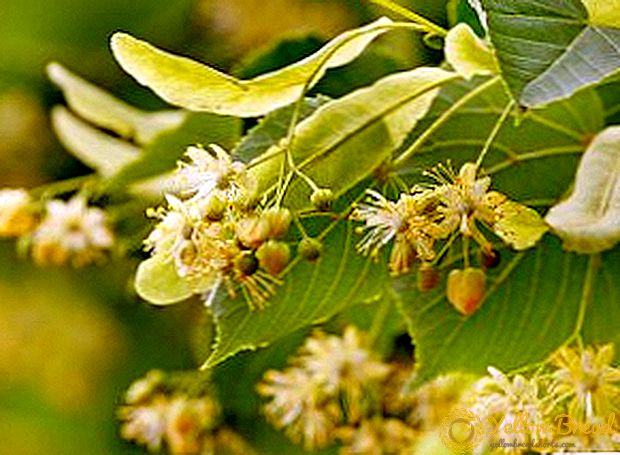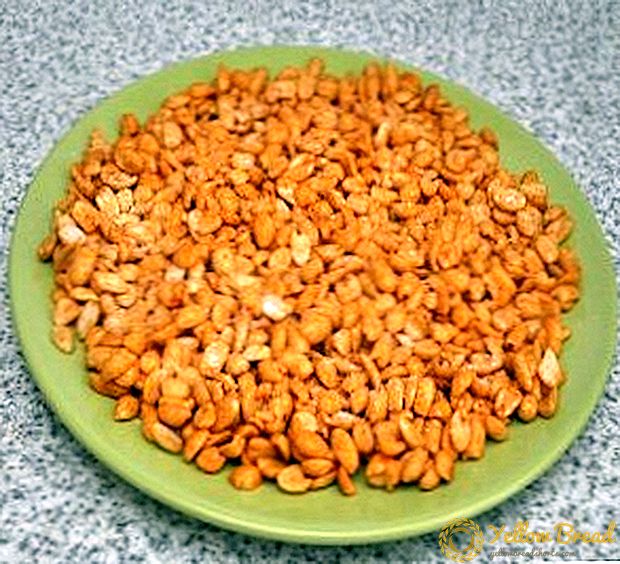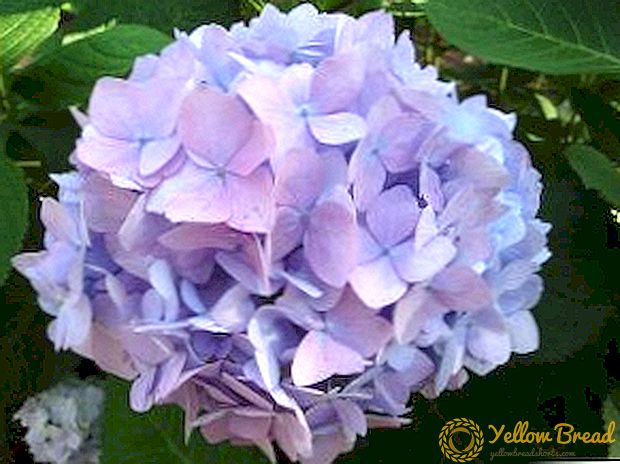 On a hot, hot day, it is pleasant to relax in the shade of an old sprawling linden — a useful and beautiful tree with a wealth of valuable properties and qualities. Do we often wonder what a tree like linden is?
On a hot, hot day, it is pleasant to relax in the shade of an old sprawling linden — a useful and beautiful tree with a wealth of valuable properties and qualities. Do we often wonder what a tree like linden is?
It grows everywhere, familiar to the eye of both the city dweller and the inhabitant of the countryside — a common, unremarkable tree, part of the landscape. Few people now know that in the ancient European tradition it symbolizes the feminine: dishes, combs, shoes, and many other household items were made of its wood.
- Characteristics of linden tree
- American linden (black) (Tilia americana)
- Amur Lipa (Tilia amurensis)
- Felt linden (silver) (Tilia tomentosa)
- European linden (Tilia europaea)
- Caucasian linden (Tilia caucasica)
- Large-leaved linden - (Tilia platyphyllos Scop.)
- Manchu Linden (Tilia mandshurica)
- Small-leaved linden (heart-shaped) (Tilia cordata Mill)
- Linden (Tilia x vulgaris Hayne)
- Siberian linden (Tilia sibirica)
- Japanese linden (Tilia japonica)
Characteristics of linden tree
A linden tree is a beautiful and in many respects useful tree, whose height reaches 40 meters in some cases, referring to deciduous trees. The leaves are alternate, shaped like a heart, jagged, asymmetrical at the edges, pointed apically.
The diameter of the crown can be up to 5 meters, the crown itself is dense, giving a magnificent shade, perfectly amenable to molding.
Flowers have a fragrant aroma and valuable healing properties. In July, when it blooms, a buzz is constantly heard near it - the bees collect honey. Lime honey is considered to be one of the most valuable types of honey. The fruits are small nuts with one seed inside. 
The root system is very powerful, penetrating deep into. Trees are considered quite resistant against pests and diseases, they are well adapted to environmental conditions, many species are tolerant to shade.
The described qualities allow using it in plantings created for decorative purposes.
Where does linden grow, the soil improves there: its leaves rot very quickly,thus returning to the soil a large number of valuable elements contained in them.
American linden (black) (Tilia americana)
It lives in the east of North America, has a bark of black color, for which it received the second name.  Height can be up to 40 meters. The krone has the shape of a wide oval, the diameter of the crown reaches 22 meters. Shoots are bare, green or brown. The leaves have the shape of a wide oval, sometimes reaching 20 cm in width.
Height can be up to 40 meters. The krone has the shape of a wide oval, the diameter of the crown reaches 22 meters. Shoots are bare, green or brown. The leaves have the shape of a wide oval, sometimes reaching 20 cm in width.
The peak of flowering falls on the middle of July, the flowers of 8-15 pieces form inflorescences, the fruits are round nuts without ribs, up to 1 cm in diameter.
The tree is unpretentious to the soil and light, calmly applies to frost, and to drought, and to the wind. Growing in no hurry, for the year adds a height of 60 cm.

American linden is a good solution for alleys and parks, as well as for single plantings.
Decorative linden shapes:
- vine growing;
- large-leaved;
- pyramid
Amur Lipa (Tilia amurensis)
The homeland of this species is the Far East. Loves mountain slopes and river valleys.  Height 25-30 meters, the diameter of the trunk reaches a meter. The bark has a reddish-brown color, an oval-shaped crown. Shoots pubescent.
Height 25-30 meters, the diameter of the trunk reaches a meter. The bark has a reddish-brown color, an oval-shaped crown. Shoots pubescent.
The length of the heart-shaped oval leaves is 7 cm, in the spring they have a light green color and bright red stipules, in the summer the green color darkens,in autumn, the leaves turn light yellow.
It blooms closer to the beginning of August, depending on the temperature, flowering time may vary. Inflorescences have from 5 to 15 cream flowers. Fruits are elongated, smooth, slightly pubescent.
It is resistant to shade, frost, wind, loves wet soil. The exceptional qualities of Amur linden:
- abundant honey plant;
- tree species value;
- decorative value.

The first quarter of a century is slow, then it accelerates. Otherwise, it (according to the description and biological characteristics) resembles a small-leaved lime tree. On average, lives 300 years.
This species is protected by the state and is prohibited to industrial logging in the Amur region, Khabarovsk and Perm region.
Felt linden (silver) (Tilia tomentosa)
Places of growth of this species - Asia Minor, Ukraine, the Balkans, Western Europe. Bred it also in the Baltic States and the Crimean-Caucasus region.  He likes to coexist with ash, oak, maple.
He likes to coexist with ash, oak, maple.
In height can grow up to 30 meters. Her crown of the correct form, pyramidal, later - oval. The barrel has a regular cylindrical shape. The bark is dark gray, smooth to the touch, cracks appear later, shoots are pubescent, later the pubescence disappears.
The leaves are oval, pointed at the top, 7-8 cm long. Yellowing in autumn, they do not leave the tree for a long time.
A ten-day bloom occurs in the second half of July. Cream colored fragrant flowers in a variety gathered in the half-umbrellas. Short-pointed nuts reach a length of 1 cm.

He loves the light, the shadow also tolerates easily, as well as drought. Loves dry, fresh soil, slow growth. The lifetime of this species is up to 200 years.
The tree has a decorative value, especially during the flowering period, it is good to plant trees, private property, alleys.
Ornamental varieties of felt linden two: "Varsaviensis" and "Brabant".
European linden (Tilia europaea)
This species got its name from the place of growth: it lives in the territory of Western Europe.  It grows to a height of 40 meters. Her crown is thick, tent-like. The trunk in diameter can be up to five meters, the bark is gray, covered with cracks.
It grows to a height of 40 meters. Her crown is thick, tent-like. The trunk in diameter can be up to five meters, the bark is gray, covered with cracks.
The leaves are oval, heart-shaped, the top of the leaf is dark green, the bottom is grayish-white.

It blooms in June for two weeks. Ribbed nuts, fruits ripen in August.
Differs in winter hardiness. Life expectancy is 150 years, although long-livers are found almost ten times older than this period.
Decorative species of European linden: split and vine-growing.
Caucasian linden (Tilia caucasica)
A common species mainly in the Caucasian and Crimean forests, is found in Asia Minor.  In some cases, the tree reaches 40 meters in height, the trunk has a diameter of 2 meters. Crohn round or egg-shaped. Young sprouts have a reddish color.
In some cases, the tree reaches 40 meters in height, the trunk has a diameter of 2 meters. Crohn round or egg-shaped. Young sprouts have a reddish color.
The leaves are large, up to 15 cm, the upper part of the leaf has a dark green color, the lower part is gray, in the corners of the veins there are bunches of hairs.
Flowering time may be at the end of June or mid-July. The flowers are yellowish, abundant, fragrant, drooping inflorescences.
A heat-loving drought-tolerant tree, preferring, however, moist fertile soil; Caucasian linden grows faster than small-leaved, and lives up to 300 years.
The tree has a decorative value, used for gardening alleys.
Ornamental species: dark green and begoniole.

The species is common in the deciduous forests of the Crimea, is a natural hybrid of the Caucasian and small-leaved linden.
The height of the tree is up to 20 meters. The krone is oval, dense. Branches wilted.
The leaves are 12-centimeter, oval, dark green on the outside and dull from the inside, in the corners of the veins tufts of brown hair.
Flowering time - the beginning of June, the duration - two weeks. Flowers have 3-7 pieces in inflorescence.
The young tree grows slowly, as they grow older, growth accelerates.
It is resistant to frost and drought, easily tolerates shade.
Large-leaved linden - (Tilia platyphyllos Scop.)
Distributed in the forests of Europe, Ukraine, Moldova, the Caucasus.  The trunk height of up to 35 meters, reaches a diameter of 6 meters. The crown is spreading, has the shape of a wide pyramid. Young shoots are brownish-red, pubescent, young - naked.
The trunk height of up to 35 meters, reaches a diameter of 6 meters. The crown is spreading, has the shape of a wide pyramid. Young shoots are brownish-red, pubescent, young - naked.
Oval 14-centimeter leaves fleecy, dark green on the outside, light from the inside, in the corners of the veins hairs.
Flowering occurs in July, the flowers are yellow or cream, from 2 to 5 pieces in the inflorescence.The fruit is in the form of a nut, round shape, ribbed.

The tree grows quickly, the soil loves fertile. Moderately resistant to frost, gas.
Decorative species of large-leaved linden: golden, vine-growing, pyramidal, dissected-leaved.
Manchu Linden (Tilia mandshurica)
It grows in the southern regions of the Far East.  The tree grows to 20 meters. It is often multilateral, the bark is black, in cracks.
The tree grows to 20 meters. It is often multilateral, the bark is black, in cracks.
The crown of his has the shape of a wide oval. It has extremely large, up to 30 cm, leaves pubescent from the underside.
It blooms in July, bloom lasts about three weeks. Flowers 1-1.5 cm in diameter, inflorescences powerful, 8-12 flowers, drooping.

Densely pubescent nuts with a diameter of 1 cm ripen in August.
Very decorative tree with high frost resistance.
Small-leaved linden (heart-shaped) (Tilia cordata Mill)
It grows in the Crimean-Caucasus region, in the European part of Russia, as well as in Siberia, and Western Europe. Another name - linden heart-shaped - received for the shape of the leaves.
It reaches 30 meters in height, the trunk is more than a meter in diameter, of a cylindrical shape. The young bark is gray, smooth, the old darkens, becomes rough. 
The diameter of the crown 10-15 meters.
The leaves are small (3-6 cm), heart-shaped, the upper part is green, shiny, lower - gray.
It blooms about two weeks in late June or early July. The flowers are small, yellow-white, in each inflorescence from 5 to 7 pieces. Fruits, round smooth nuts, ripen by August.
Extremely cold and drought-resistant tree, likes fertile light soil, however, it improves it.

It grows slowly at first, 30 cm per year. Used for planting along the alleys, in parks, good for single plantings and as a hedge.
Life expectancy is more than 500 years.
The small-leaved linden and large-leaved linden have much in common in their biological characteristics, however there are some differences:
- leaves have small leaves bloom two weeks earlier;
- small-leaf blooms two weeks later;
- large-leaved flowers are larger, but smaller in inflorescence;
- small-leaved less demanding on soil fertility and quality;
- large leaves tolerate drought better;
- large-leaved is more suitable for urban conditions.
Linden (Tilia x vulgaris Hayne)
This species is a natural hybrid of small-leaved and large-leaved limes.  According to its characteristics, it resembles the first, but has some differences:
According to its characteristics, it resembles the first, but has some differences:
- blooms two weeks earlier than the small-leaved linden;
- grows faster;
- more resistant to frost;
- better city conditions;
- leaves are larger, the crown is wider.
Siberian linden (Tilia sibirica)
It grows on the territory of Western Siberia, loves solitude, but sometimes forms “lime islands” in forests, the description of which mentions the presence of fir and aspen.  Growth reaches 30 meters, the diameter of the trunk 2 - 5 meters. The young bark is brown, with scales, the old one is dark, with cracks.
Growth reaches 30 meters, the diameter of the trunk 2 - 5 meters. The young bark is brown, with scales, the old one is dark, with cracks.
The leaves are small, up to 5 cm long, rounded, the top is green, the bottom is light, with hairs.
Flowering takes two weeks at the end of July. The flowers are white with yellowness, constitute a spherical ovary. Fruit - pear-shaped nut, having from 1 to 3 seeds, ripens in September.

He loves wet sod-podzolic soil with lime and light, tolerates shadow. Completely incompatible with wetlands. City conditions accepts favorably.
It grows slowly, refers to long-lived: can live a thousand years.
Japanese linden (Tilia japonica)
It grows on the territory of East Asia, in deciduous subtropical forests.  The height of the tree is up to 20 meters, the young bark is smooth, brown, old in the grooves, dark. The krone is highly located, has the oval form, compact.
The height of the tree is up to 20 meters, the young bark is smooth, brown, old in the grooves, dark. The krone is highly located, has the oval form, compact.
The leaves are small, 5-7 cm, oval, often symmetrical, green outside, gray-gray inside with hairs in the corners of the veins.
Flowering occurs in July or August for two weeks. The flowers are small (1 cm), collected in large numbers in drooping inflorescences.
Fruits - round smooth pubescent nuts - ripen by September.

Japanese lime grows slowly. Possesses frost resistance, is exclusively a honey plant. Tea containing leaves of Japanese linden is very valuable.
It is impossible to put everything within the framework of one article that you should tell about linden - a wonderful and wonderful tree, literally all parts of which are useful for people. There are more than 40 varieties of it. The cultural linden, the species of which are described in this article, is selected and used for various purposes in urban plantings and private farms.






